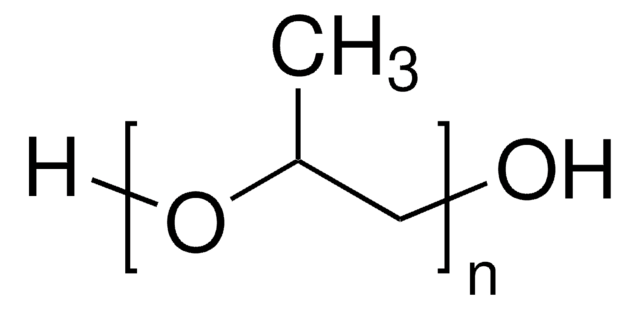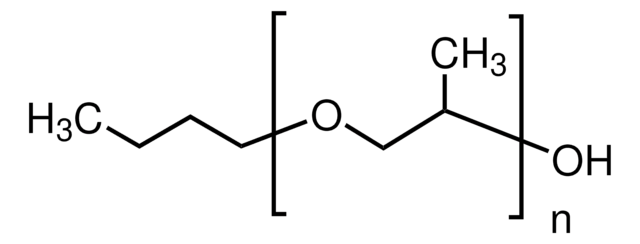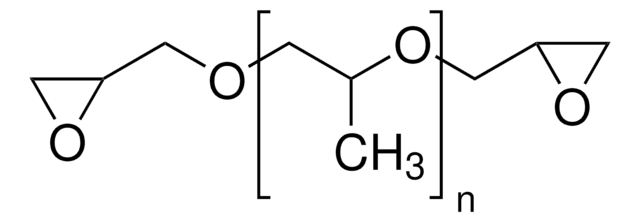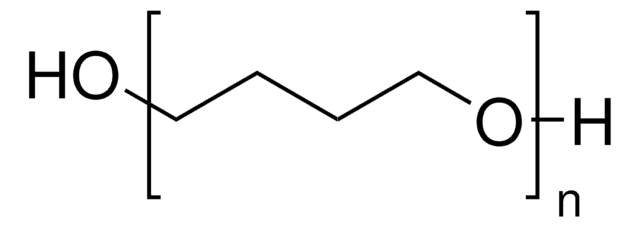Wichtige Dokumente
202304
Poly(propylenglycol)
average Mn ~425
Synonym(e):
PPG, Poly-(propylenoxid)
About This Item
Empfohlene Produkte
Dampfdichte
>1 (vs air)
Qualitätsniveau
Dampfdruck
<0.01 mmHg ( 20 °C)
Mol-Gew.
average Mn ~425
Enthält
130-190 ppm proprietary phenolic antioxidant
Brechungsindex
n20/D 1.447
Viskosität
80 cSt(25 °C)(lit.)
Hydroxylzahl
263 mg KOH/g
Löslichkeit
water: miscible (completely)
Dichte
1.004 g/mL at 25 °C
SMILES String
CC(O)CO
InChI
1S/C6H14O3/c1-5(8)4-9-6(2)3-7/h5-8H,3-4H2,1-2H3
InChIKey
DUFKCOQISQKSAV-UHFFFAOYSA-N
Suchen Sie nach ähnlichen Produkten? Aufrufen Leitfaden zum Produktvergleich
Anwendung
- Als Weichmacher, da es nicht kristallisiert, eine geringe Glasübergangstemperatur aufweist und biokompatibel ist. Es kann beispielsweise für die Plastifizierung von Polymilchsäure eingesetzt werden.
- Zum Herstellen des wässrigen zweiphasigen Systems für die Rückgewinnung von Ectoin aus Halomonas-salina-Zellen.
- Zum Untersuchen des virtuellen Übergangs von supramolekularem Polymer (PPG) zu normalem Polymer (PPO).
Lagerklassenschlüssel
10 - Combustible liquids
WGK
WGK 1
Flammpunkt (°F)
445.0 °F - closed cup
Flammpunkt (°C)
229.44 °C - closed cup
Persönliche Schutzausrüstung
Eyeshields, Gloves
Hier finden Sie alle aktuellen Versionen:
Besitzen Sie dieses Produkt bereits?
In der Dokumentenbibliothek finden Sie die Dokumentation zu den Produkten, die Sie kürzlich erworben haben.
Kunden haben sich ebenfalls angesehen
Artikel
A Review of Mesoporous TiO2 Thin Films
Unser Team von Wissenschaftlern verfügt über Erfahrung in allen Forschungsbereichen einschließlich Life Science, Materialwissenschaften, chemischer Synthese, Chromatographie, Analytik und vielen mehr..
Setzen Sie sich mit dem technischen Dienst in Verbindung.



